Weisner and Iben assert that “faster growing hatchlings live under the
cover of grass... providing a higher level of ambient humidity”. In
fact, in many Testudo habitats
there
is
little or no grass present. In areas where it is, for example
in Southern Spain and parts of North Africa where Esparto grass (Stipa tenacissima or Lygeum spartum) is an important
feature of Testudo graeca graeca
habitats
measurements
recorded over a 12 month cycle by the present
author using a series of SL52TH temperature and relative humidity data
loggers revealed that the typical relative humidity within clumps of
grass occupied by tortoises infrequently exceeded 50% during daytimes
and was typically below 40%. Levels of 30% were common. The only
instances of very high humidity recorded invariably coincided with
rainfall or immediately following episodes of precipitation. In total,
more than 18,000 data points were recorded and in only 2% of these did
relative humidity exceed 80%. There is a rise in moisture overnight,
usually at approximately 3-4 am as dew begins to form. This persists
for a very short time, and usually peaks at around 65% RH.
Extensive observations were made of wild juvenile and hatchling Testudo graeca graeca activity at
various sites in Murcia and Almeria, Southern Spain, and miniature data
loggers were temporarily affixed to their carapaces to record changes
in both carapace surface temperature and relative humidity every 30
seconds. The results consistently indicate that juveniles are
frequently exposed to ambient relative humidities as low as 20% for
extended periods during browsing and basking. Tortoises were monitored
over a 12 week period in early spring 2010 and at no time were they
exposed to levels of relative humidity approaching 100% except during
or immediately following rare episodes of precipitation as a
consequence of thunderstorms. This data clearly demonstrates that while
it is true that clumps of Esparto grass do provide a “higher” level of
relative humidity microclimate that is exploited by tortoises, it is
typically well below <50% RH deep within the grass clump compared to
<30% in free air, which is a very long way from the levels of 90% to
100% RH suggested by some authors.
These images show the habitat studied.

Recording relative humidity next to a juvenile Testudo graeca graeca in
early Spring 2010.
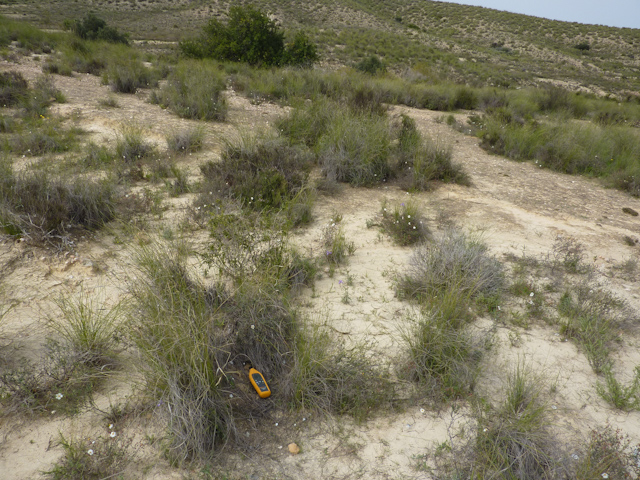
The same location in context.
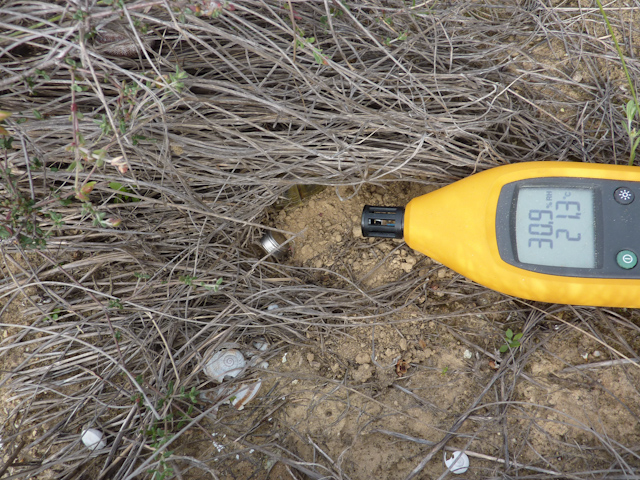
Planting a miniature data logger in the microclimate used by juveniles.

Typical results of logger over a 14-day cycle in this habitat. The peak
in RH (red line) to 90% coincided with an early summer thunderstorm
with torrential rain.
There is typically an overnight rise in RH, normally peaking at circa
65%. During the day, RH averages circa 35%.

2009 juvenile browsing in Spring 2010.
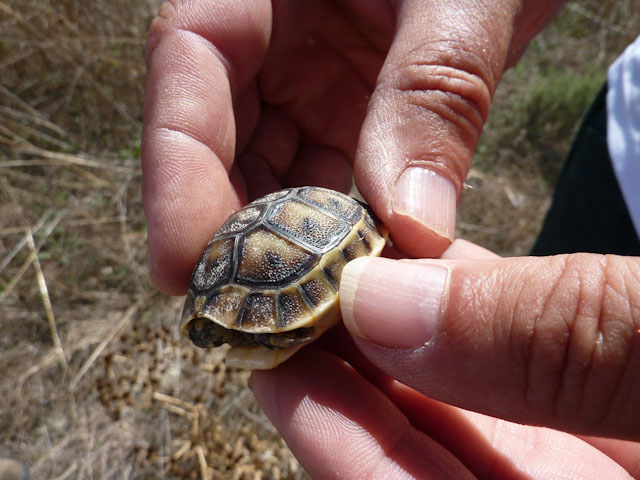
The first wild hatchling of 2010. Located in early September.
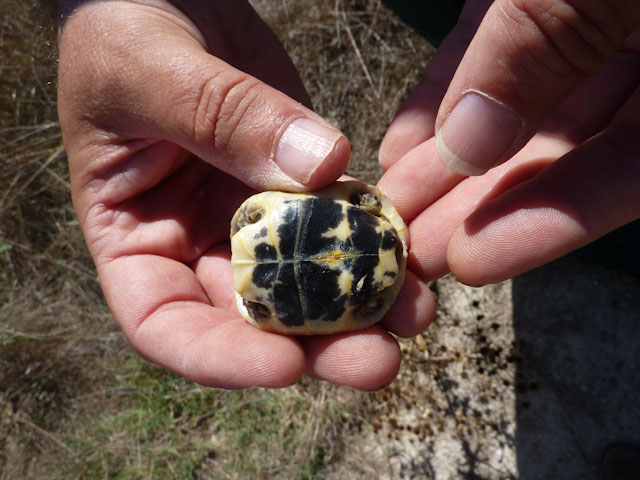
Egg-sac only recently absorbed.
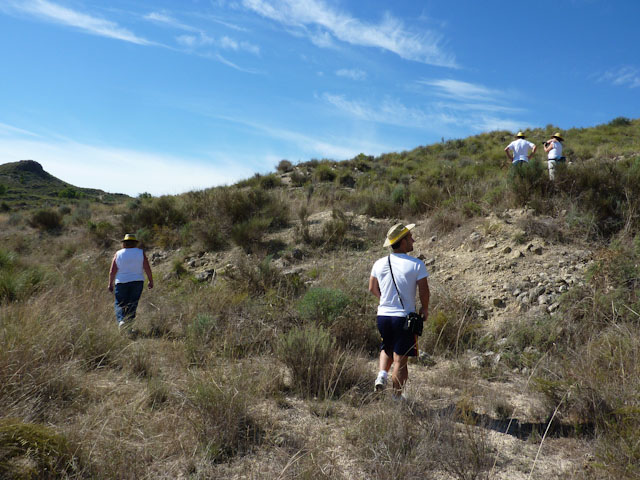
Searching the location where this hatchling found. Volunteers from
local conservation group.
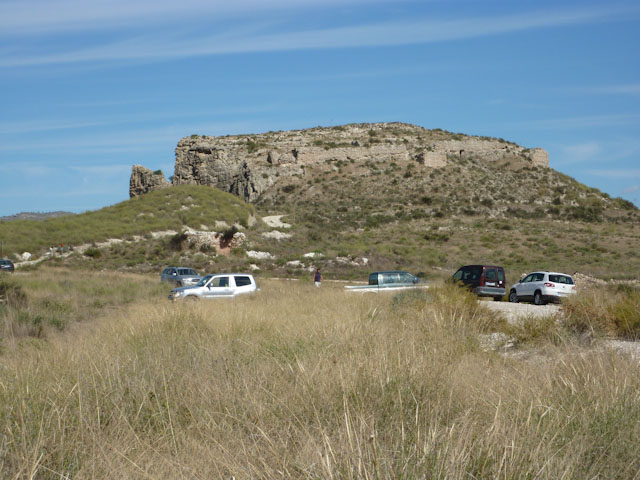
Same area.
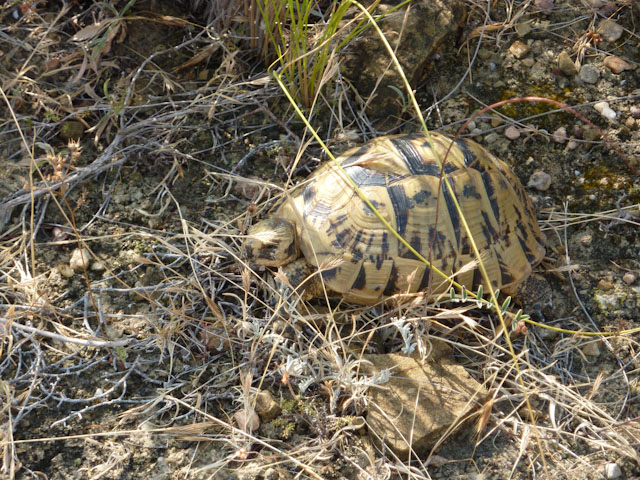
Young adult female.
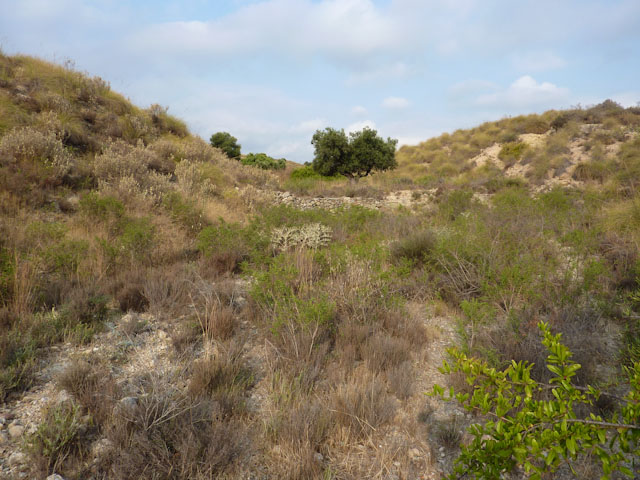
Site with high density of hatchlings and juveniles.
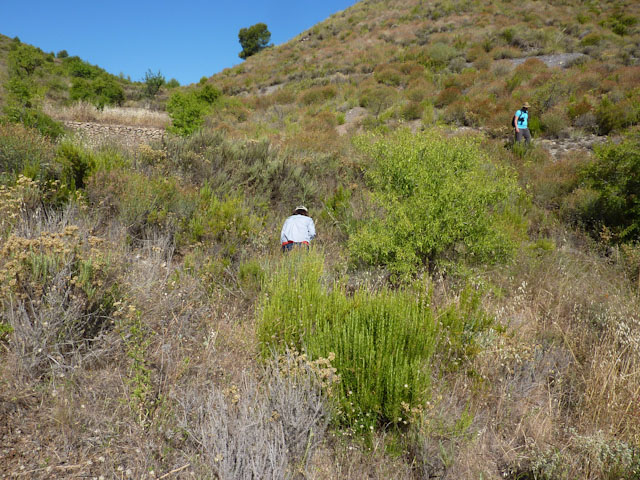
Another typical habitat in Southern Murcia.
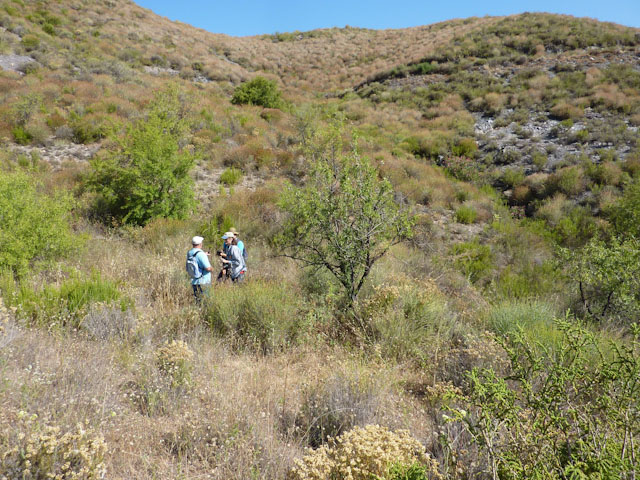
Same locality.
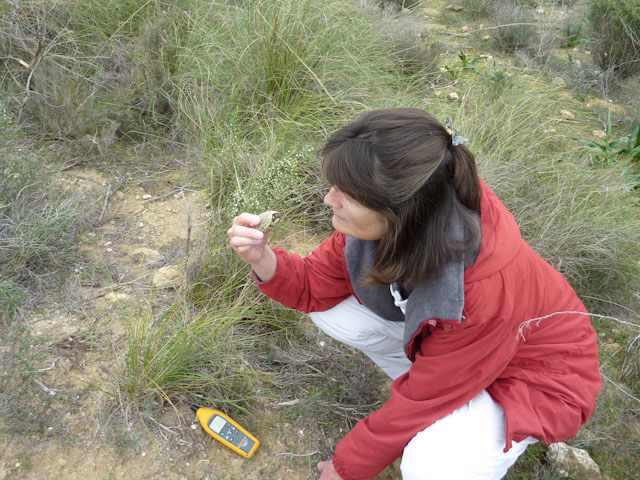
A juvenile, with meter indicating exact location it was found in, under
Esparto grass.
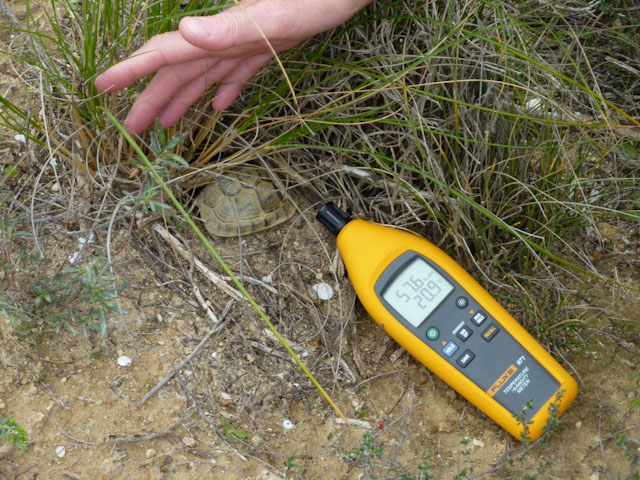
Exacty as located. This was in eary Spring 2010, after overnight rain.
Note relatively low ambient temperature (20.9C) and high RH (57.6).














